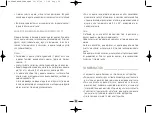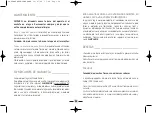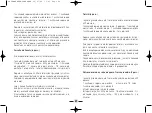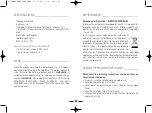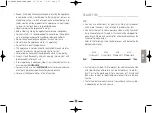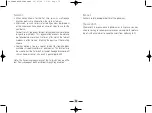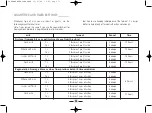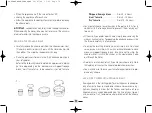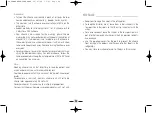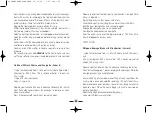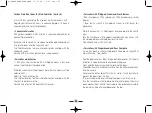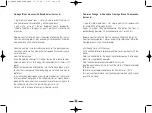
Procedure:
• Turn out the cheese and sprinkle a pinch of salt over the top.
Season additionally as desired (e.g., pepper, herbs, cumin).
• The next day, turn the cheese over and salt again lightly on the
other side.
• Repeat each day for 3 to 4 days for a 1 to 1.5 L cheese or 2 to
3 days for a 0.25 L cheese.
• Your cheese is now ready for the maturing phase. Cheese
matures best in a cellar or basement with good air circulation at
around 15°C. If a basement is not available, put the cheese in
the coolest place in your home and cover it with a mesh chee-
se cover to keep insects away. Continue turning the cheese over
every day.
• For dryer cheese, leave in this manner for several days until rea-
ching the desired consistency. For runnier cheese, follow the
same procedure but keep the air temperature at 20 to 22°C and
air circulation to a minimum.
Note:
Ripening cheese is an art that takes time to learn. Be patient, and
as you experiment you will make quick progress.
Feel free to experiment until you arrive at the type of cheese you
prefer.
For example, a semi-soft, crumbly cheese such as Crottin de
chèvre takes approximately 0.5 L of milk.
For larger cheeses it is necessary to multiply all proportions.
For your first cheeses, however, we recommend using 1 L of milk.
STORAGE
________________________________________
• Keep your fromage frais cool in the refrigerator.
• To keep the faisselles moist, leave them in their strainers in the
low position in their pots so that they stay in contact with the
whey.
• For a dryer product, leave the strainer in the low position in its
pot after first removing all whey or in the high position to conti-
nue drainage.
• Use the supplied covers for the pots to prevent the cheese
from taking on the odours and flavours of other foods in the
refrigerator.
• You may store your cheese for up to 10 days in this manner.
78
LA FROMAGERE:LAGRANGE 22/07/09 15:41 Page 80

